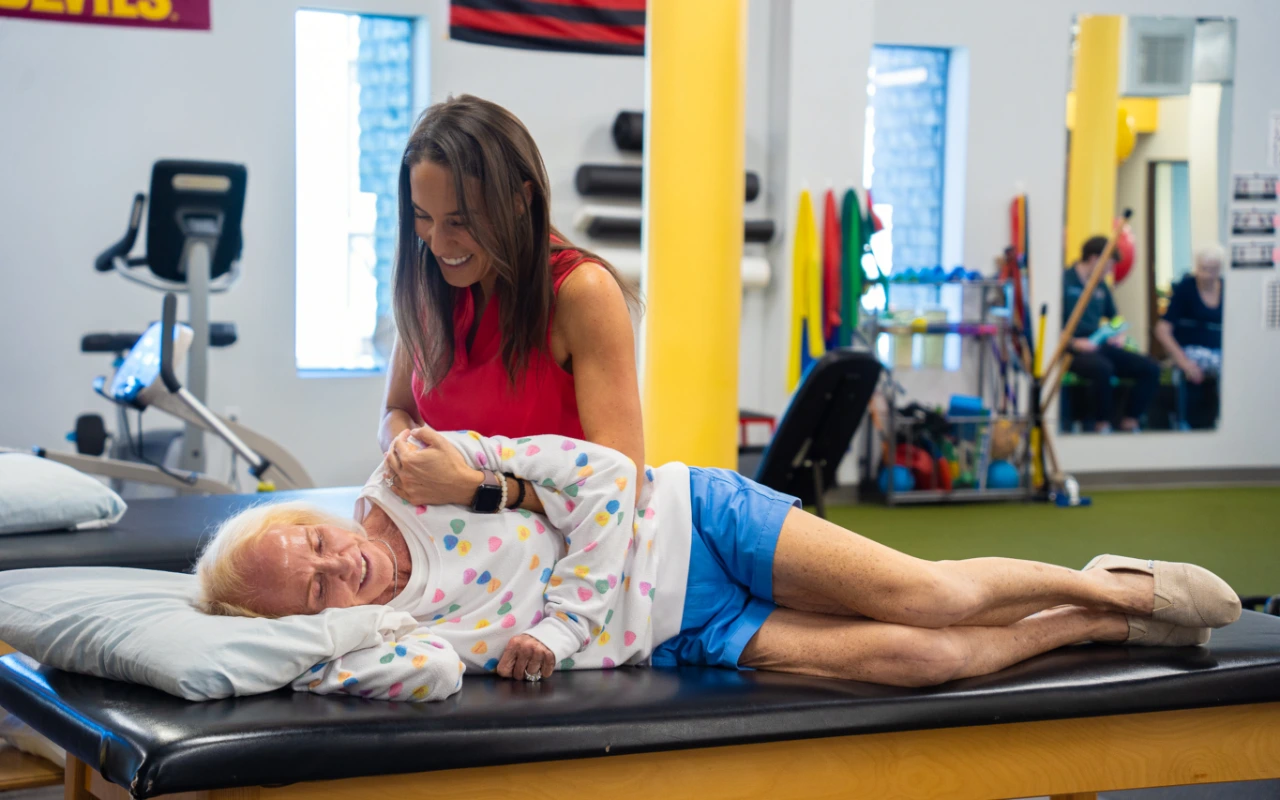By: Brooke Vaughn, PT, DPT, and Emily Stafford, PT, DPT, CAFS, FAFS
Life-saving treatments may cause pain in your neck, back, and shoulders. Generally speaking, pain in these areas is caused by movement restriction or soft tissue healing. Treatments like radiation, chemotherapy, and surgery all can inhibit your mobility and impact your tissues- therefore causing pain.
Cancer Treatments and Pain After Treatment
Radiation: The more common types of radiation for breast cancer are photon types, which is a broader radiation. This radiation covers a quarter of your upper body from the front and back. This treatment often causes tightening of all of the structures it hits. So, you may experience limited upward rotation in the scapula, limited mobility in the ribs, and a tightening of the muscles of that region.
Chemotherapy: Your port is placed on the front of your chest, near your shoulder. The port itself can alter your movement patterns, and it can also potentially cause issues with muscle and soft tissue lengthening. Chemotherapy can also contribute to fatigue and joint, muscle, or nerve pain.
Surgery: You may undergo a lumpectomy, a mastectomy, or a reconstruction throughout your treatment process. In any of these surgeries, the recovery process itself can cause neck, back, and shoulder pain. For example, whether you undergo a bilateral or unilateral mastectomy, you are likely to experience a shortening of your pectoral (chest) muscles. This will cause you to take on a protective posture that will round out your back and pull your head forward. This can cause issues with mobility in your back and neck which can lead to pain. Often, when breast tissue is removed, sentinel lymph nodes- the lymph nodes closest to your tumor- are removed. Lymph nodes are often removed from your axilla (armpit), so, when they are removed, you may experience a restriction of shoulder mobility.
Anything that impacts the shoulder is likely to impact the upper back and neck (and vice versa) because these regions share muscle and connective tissue attachments. Your scapula, for example, is a large bone structure in your shoulder. When it moves, it interacts with your ribs, your mid back, and your neck. When it’s injured or can’t move normally, your neck and back will be affected as well.
Physical Therapy for Treatment-Related Pain
Spooner Breast Health physical therapists use a variety of techniques to help you move and feel your best during and post-treatment. We use a combination of hands-on techniques and exercise-based interventions. We use our hands and hand-held tools to manually stretch out your tissues, aid in mobility, and desensitize scar tissue. The exercises we use are individualized to you. We look to progress your existing mobility and manage any symptoms you may experience while undergoing treatment.
Our team also works to help reduce your risk for lymphedema. There are exercises that we do to help your body act as a pump again. While we have hands-on techniques to manually move fluid out of the way to restore normal fluid dynamics for shoulder and neck motion, we can also prescribe exercises that will enhance your mobility and reduce swelling as well.
If you are pre, during, or post-cancer treatment, schedule an appointment with a Spooner Breast Health physical therapist today. Together, we will work to improve your mobility and strength, so you can have reduced neck, back, and shoulder pain.

